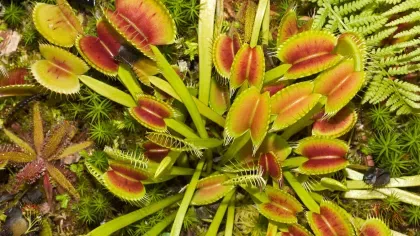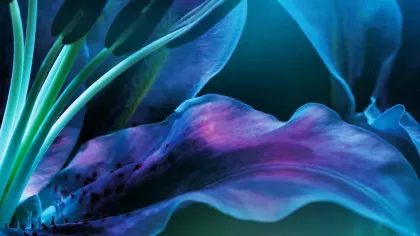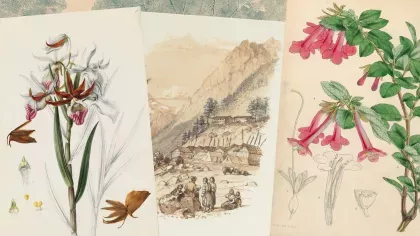
Carnation
On this page
The carnation is a plant rich in symbolism.
They are linked to birth, death, love, rebellions, God, socialism and even Mother’s Day.
Additionally, carnations are a popular garden plant, often found in window boxes and borders.
The carnation has been cultivated as an ornamental for thousands of years, first recorded by the Ancient Greeks.
The name of the genus, Dianthus, comes from the Ancient Greek words 'dios' meaning 'divine', or 'of the gods', and 'anthus' meaning 'flower'.
Plant description
The carnation is a long-stemmed flower that can grow up to 80cm tall. The leaves are grey-green, thin and grow in pairs on either side of the stem, up to 15 cm long. The flowers are around 3 to 5cm across, and either grow individually or in a cluster at the top of the stem. The natural flower colour is pink-purple, but cultivars come in a range of colours including red, pink, yellow, white, and green. The flowers have a slightly spicy aroma, said to be similar to cinnamon, clove and nutmeg.




Plant uses
Cultural
Red carnations are associated with love and affection. They are also linked to socialism and labour movements. In Portugal, red carnations are linked to the fall of the Estado Novo regime in 1974. While in Azerbaijan, they are linked to the Black January Massacre of 1990.
White carnations symbolise good luck, purple carnations symbolise a mercurial nature and yellow carnations symbolise rejection and disappointment.
Green carnations became a symbol of homosexual love due to Oscar Wilde’s wearing of one, and the subsequent satire inspired by him, The Green Carnation by Robert Hichens.
In the USA, carnations are linked to Mother’s Day.
Carnations are the flower associated with the first wedding anniversary.
Food and drink
While not used today, the fragrance of carnations meant they were historically used in beer, wine and salads.
Did you know?
The name carnation either comes from the Latin corona, referring to flower crowns made from carnations, or carnis, meaning flesh, referring to the natural pink colour of the flower.
White carnations are often used in a classic science experiment showing how plants absorb water by placing them in a pot of dyed water, and observing the colour change in the petals.
Where in the world?

Well-drained environments across the Mediterranean.
Find it in our gardens
Kew Gardens
A botanic garden in southwest London with the world’s most diverse living plant collection.
%5B1%5D.jpg.webp?itok=u-OkaDkV)




